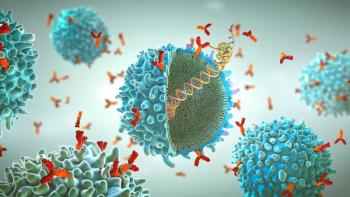
- BioPharm International's BP Elements, February 2023
- Volume 2
- Issue 2
Nova Biomedical Launches Cell Density and Viability Analyzer
The BioProfile FAST CDV is a fully automated viable cell density and viability analyzer.
Nova Biomedical, a life sciences instrument provider, recently announced the launch of the BioProfile FAST CDV, a high-throughput, fully automated viable cell density and viability analyzer. The device uses trypan blue dye exclusion methodology for determination of live and dead cells, as well a high-resolution camera/optics to provide cell density and cell viability measurements.
According to a press release from Jan. 3, 2023, the analyzer is capable of producing results in less than 70 seconds with 100 microliters of sample volume. It also performs all sample dilutions internally, which allows cell culture samples up to 140e⁶ c/mL to be analyzed without external sample dilution. The device can sample cell cultures via an external 36-position loans-and-go tray or via a 96-well plate option.
The software associated with the device has a built-in touch screen display and icon-based navigation. Its software and networking capabilities are 21 Code of Federal Regulations Part 11 compliant and have also been designed to meet FDA’s new cybersecurity guidelines.
“We at Nova Biomedical are excited to launch the next addition to the BioProfile platform with the FAST CDV Analyzer,” said Matt McRae, Biotechnology Sales Product line manager, Nova, in the release. “The FAST CDV is a significant advance in automated cell density analyzers and breaks the boundaries of existing technologies. It will enable even faster evaluation of cell lines and physicochemical parameter optimization, ultimately bringing products to market faster.”
Source: Nova Biomedical
Articles in this issue
almost 3 years ago
Technology Advances in Outsourcing Servicesalmost 3 years ago
Thermo Fisher Scientific Announces Founding Sponsorship of Momentum Labsalmost 3 years ago
Scientific Laboratory Supplies Acquires C&M ScientificNewsletter
Stay at the forefront of biopharmaceutical innovation—subscribe to BioPharm International for expert insights on drug development, manufacturing, compliance, and more.




